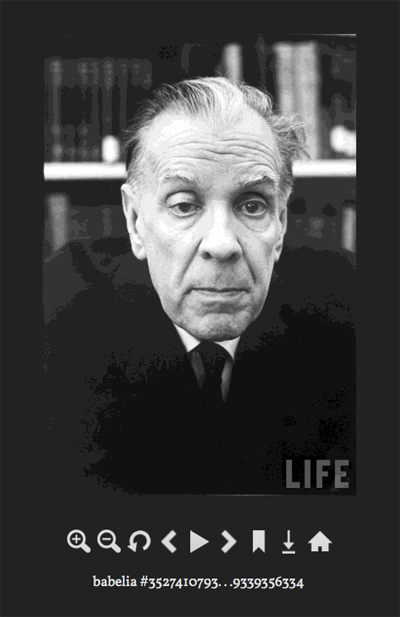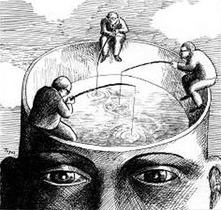About
The Babel Image Archives are an application of the principle underlying Jorge Luis Borges' “The Library Of Babel” to the visual world. Borges' short story, the inspiration for libraryofbabel.info, describes a universal library containing every possible permutation of 410 pages of letters, thus everything that ever has been or ever could be written. Instead of letters and punctuation marks, the Image Archives permute the 4096 colors, and rather than a page of 40 lines each with 80 characters, the images are pixel grids with 416 rows and 640 columns. It contains every image that ever has been or could be created with this color palette in these dimensions, including portraits of every person who ever lived at every moment in their life, digitized versions of every work of art ever created, even those lost to history, as well as every work of art which ever could be created, and photographs of your own birth, wedding, and funeral. It contains 4096266240 (~10961755) unique images.
Borges' story, as well as its online iteration, demonstrate a property of the essence of language. Though it is commonly thought that the meaning of language bears an intrinsic relationship to the conscious, rational intentions of the speaker or writer creating an utterance, the Library of Babel reminds us that language is always possible in the absence of any intention toward signification. In fact, every word we speak or mark we make, even the most intimate and spontaneous, is indistinguishable from its mechanical reiteration. The Babel Image Archives exist to make us mindful of a similar property of the visual world (which is, in its own way, a language). Though we think of the world we perceive through sight as the most fundamental layer of reality, it is itself a representation, subject to the same vicissitudes as language, capable of being dislodged from its motivating context. If we glance at our surroundings, it seems as though the objects before us are immediately present, but anything we see forevermore has been foretold in the library, long before this moment and indifferent to the presence of its contents.

Permutations

Universal Slide Show
The Universal Slideshow cycles through every possible image in the order they appear in the Babel Image Archives. It takes about three seconds to load a new picture, and would traverse the entire collection in 10961748 years. The slideshow typically begins at a random point, but you can start from the location of any image by entering its location number, or by following a link from the image search or bookmark pages.
As with the text library, the promise of discovering the hidden truth and beauty of the past and future can be enticing, though probability dictates that we may only ever find random noise. Remember that as with the library's cryptography, these fields of colorful static may be ciphers for any possible vision, like an abstract painting which takes its impetus from the everyday, and awaits the magic eye which can reveal its secrets.
Coloroscopy
Coloroscopy is a simpler permutation of the red, green, and blue values comprising the 16,777,216 web colors. It changes colors every millisecond, and would take about five hours to traverse the complete set. It starts from a random point and permutes in a different order each time, so if you don't like what you see, just hit refresh.
Navigation
This site is a digital archive providing access to nearly 10961755 images. As a result, it can be quite difficult to find one's way around. Each image has been assigned a number from which it is programmatically generated. That number is the input of a pseudo-random number generator whose output is converted into the pixels of the image you see. It's possible to visit random locations in the library through the Universal Slide Show, to find the location of any image using the image search, to bookmark any image and return to it via the URL you create, or to visit an image by entering its location number (more on that below). Note that because the images are generated programmatically you will not be able to copy their URL or save them to disk from the context (right-click) menu. Use the bookmark or download links below the image instead.
Image locations are typically almost 1,000,000 digits long, which makes them somewhat unwieldy. To copy an image's full location, click on the truncated image location beneath it (the number prefaced by "babelia #" in the example at right). A prompt or text area will appear containing full image location. You can copy the text, and/or type or paste any location into this field and hit enter/click Seek to look up an image by its location. Some browsers struggle more than others with allowing the copying and pasting of million-line strings. The proportions of the image archives stretch many aspects of the programming process to their limits. I have done my best to work around the limitations of each browser - if you experience problems, I find that Firefox works most smoothly.

Origins
The Babel Image Archives were created by Jonathan Basile, as an extension of the themes and code which led to the creation of libraryofbabel.info. Building the library greatly increased my desire to permute, so this will be the first of many extensions of the Babelian project. I hope you'll share your own ideas and discoveries in the forum. I love to hear from folks with reflections or questions about the site or Borges, so feel free to get in touch by email, at jonathan [dot] e [dot] basile [at] gmail [dot] com.

